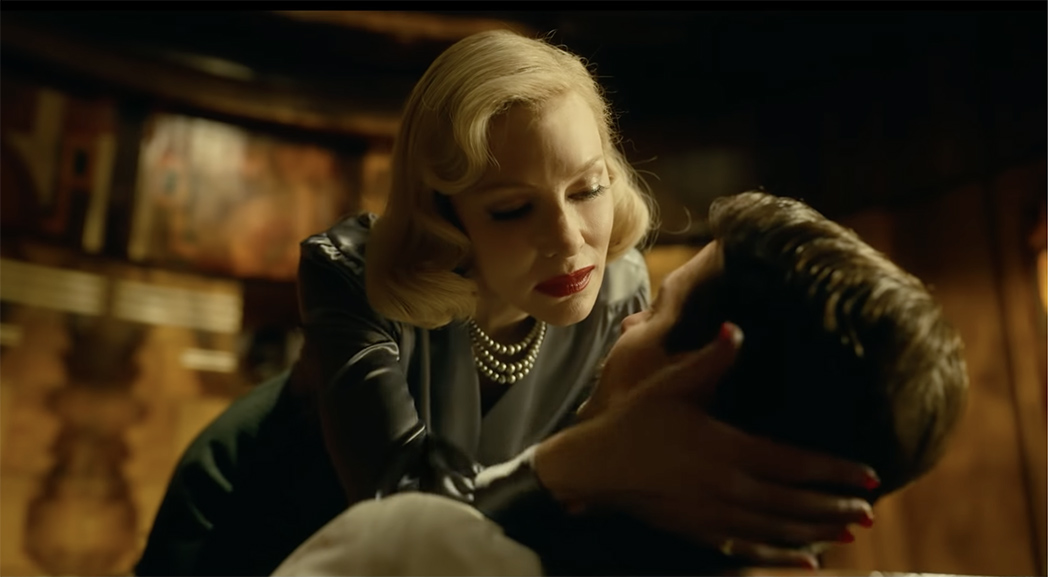From start to finish, Guillermo Del Toro’s Nightmare Alley is a dreary, plodding, flashy reminder of why filmmakers should leave great movies alone. The William Gresham novel was adapted into a 1947 film noir classic, and again by Del Toro—but Del Toro’s misuse of excellent source material is the real nightmare here.
The film follows Stanton Carlisle (Bradley Cooper), a fugitive who joins a traveling carnival, and seduces Zeena (Toni Collette), a phony mentalist, to learn how to perform her alcoholic partner Pete’s (David Strathairn) sideshow tricks. Stanton gradually develops more sophisticated, lucrative con games, assisted by his younger lover, Molly (Rooney Mara). Unscrupulous psychologist Judith Ritter (Cate Blanchett) then aids him in grander, darker schemes.
Nightmare Alley has proved a box office bomb, just like the 1947 version, which tanked partly because pretty-boy lead Tyrone Power sought to shatter his nice-guy image by playing a lowlife, which only repelled audiences. It seems like 21st-century audiences are having a similar reaction to Cooper’s casting as a creep. That’s where the similarities between the two films end.
Director Edmund Goulding gave his Nightmare Alley a raw, tightly wound intensity, leaving the viewer feeling truly hellbound. Its portrayal of broken-down carny mentalist Pete remains one of the most terrifying depictions of chronic alcoholism in film history.
Del Toro, however, revels in silly excess. Hideous gore provides periodic sophomoric shocks. The film is totally humorless, and all style without substance. The camera roves needlessly, and the cast always seems to be lit with green gels. The film’s costume design and art direction are solid, but the sets become a distraction. One sequence takes place in an overwrought carny funhouse simply because Del Toro obviously thought it looked cool. Lilith’s office is an Art Deco stunner, but its visual splendor upstages Cooper and Blanchett.
As for the cast, Cooper is wrong for Stanton, and shows little of the cynical hardness that Power radiated. In interviews, Del Toro has derided superficial clichés that people generally associate with film noir style. But his film is devoid of any dark ambiance—Blanchett lays her hokey femme fatale act on as cartoonishly as Carol Burnett impersonating Barbara Stanwyck. The supporting cast is better: Mara, Ron Perlman, and Willem Dafoe are standouts.
As with all his films, Del Toro gets derivative, and here he references everything from Andrew Wyeth’s “Christina’s World” to Tales from the Crypt comics. An avowed fan of director Tod Browning, Del Toro lifts a memorable “spider girl” act from Browning’s The Show and aims to emulate Browning’s classic Freaks. Browning, however, actually drew on his own firsthand experiences working as a carny. Del Toro is merely referencing other people’s work—a kind of lame reality-twice-removed. Del Toro and co-screenwriter Kim Morgan affect authenticity by casually tossing in period slang like “blind pig” (a speakeasy), yet undo any genuine-sounding dialogue with anachronistic terms like “daddy issues.”
The seedy world of carnivals is deeply fascinating material, but here it’s just tedious. Like an actual carny, this Nightmare Alley is all a façade, as phony as a midway barker’s pitch. Although it’s not nearly as bad as Del Toro’s earlier remake of Don’t Be Afraid of the Dark, it’s just as unwelcome. Skip this and see the far superior original.
Nightmare Alley
R, 150 minutes
Violet Crown Cinema
